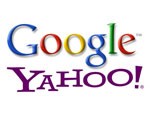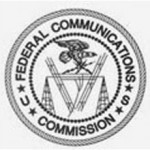 San Francisco — Google Inc., last week launched another attempt to transform its popular YouTube video sharing service into a profit engine, by teaming up with CBS Corp. to deliver new full-length TV programs via YouTube’s new Theater View style, which provides a larger video image, in addition to its shorter video offerings replete with prominently-displayed advertising.
San Francisco — Google Inc., last week launched another attempt to transform its popular YouTube video sharing service into a profit engine, by teaming up with CBS Corp. to deliver new full-length TV programs via YouTube’s new Theater View style, which provides a larger video image, in addition to its shorter video offerings replete with prominently-displayed advertising.
The new programs streaming might be even more striving than its recent launch of original animation from “Family Guy” creator Seth MacFarlane. YouTube said it is in discussions with other media partners, but declined to elaborate.
YouTube is testing the new format, though the selection continues to be selected for now, but the deal represents a different approach from the short-clip, user-generated content that turned the YouTube brand into an international video sharing powerhouse.
In addition to streaming proprietary, full-length TV episodes, YouTube intends to commence selling commercial spaces for advertisements that are to run before, during and after full-length videos. To distinguish which content is full-length and ad-supported, YouTube has created new “Film Strip” icon label. The content provider — CBS, initially has the option sell the ads and YouTube will take a cut of the revenue.
Apart from the clips collected from television broadcasts and illegally posted on YouTube by end users, CBS has had an “official” presence on YouTube for years, where the company has also posted its own short-form promotion clips.
“If you go there, it is not the best user experience — you have clips distorted up, you have to click on the various channels. You still have to stay within the YouTube boundaries,” Chad Cooper, director of editorial content and marketing of OVGuide.com, said in a statement.
“Moving around the channels is not the best user experience,” he added.
YouTube previously held up selling this ad format because the Web site feared turning off viewers of its shorter clips. But marketers have been slow to warm to advertising adjacent to the usual user-created videos that make up a majority of the videos on YouTube; some larger advertisers say they would prefer to run their ads alongside more-predictable online video content.
YouTube, which caters to around 200 million unique users each month, and they watch hundreds of millions of video clips each day. This year, YouTube has reportedly been getting well over one-third of all Internet video watching traffic.
If CBS’s goal is to get views, this is evidently an excellent play. As of yet, however, YouTube is not the be-all, end-all to online content distribution. In fact, in one way, the partnership removes the viewer from the CBS brand, Cooper noted.
“When you play with YouTube, you associate with YouTube, and YouTube is typically known for short-form, really viral, horse-kicking-a-beaver-in-the-face comedy type videos, while CBS is episodic. It is a different experience – you are connecting with the shows, it is professional,” Cooper said, noting that CBS may be missing a chance to establish a better relationship with its viewers on its own site.
This Thursday, Google is likely to deliver its fiscal third-quarter results amid growing concern among investors over the health of Internet advertising market.
Google stocks have dropped recently alongside the broader market. The shares rose late Friday afternoon to 0.3% $329.39.
The move signifies Google’s continuing attempt to turn YouTube, which it acquired for $1.65 billion in 2006, into a money-maker commensurate with the service’s popularity. Google has been criticized for that purchase, as investors and analysts struggled to understand how a video service best known for quirky content uploaded by users could provide a reliable platform for corporate advertisers.
In a conference call with analysts last July, Google Chief Executive Eric Schmidt acknowledged the matter and said, “The perfect ad product for YouTube has not been invented yet.”
YouTube, of late has amplified its efforts to generate revenue from the site. Earlier this past week, YouTube said it had developed a new e-commerce ad format called “Click to Buy”. The new feature includes ads that will appear on videos from the site’s music partners, EMI Group Ltd. and Vivendi SA’s Universal Music Group. By clicking on the ad, consumers can buy the songs via Apple Inc.’s iTunes and Amazon.com Inc.’s MP3 Store. YouTube gets paid each time a consumer makes a purchase.


